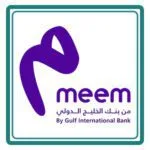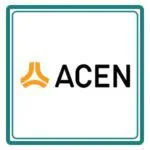Mastering ISO 14001:2015: Understanding Interested Parties and Defining EMS Scope for Environmental Success

Want to enhance your environmental performance with ISO 14001:2015? Understanding the needs of interested parties and defining the right scope for your Environmental Management System (EMS) are key to success. In this blog, we’ll show you how to engage stakeholders, meet compliance obligations, and create a solid EMS framework that drives sustainability and builds trust.
According to Clause 4.2: Understanding the needs and expectations of interested parties
General
Understanding the context of the organization is a key requirement of ISO 14001:2015, and one of the most critical aspects of this context is identifying and managing interested parties. Interested parties are stakeholders that can affect or be affected by your Environmental Management System (EMS).
As part of the EMS scope definition, these interested parties should be considered carefully. Determining who they are and understanding their needs and expectations enables meaningful communication. This process builds a foundation for mutual understanding, trust, and respect—even if the relationship is not formal. Recognizing and engaging with these stakeholders is vital for the success of your EMS and overall environmental objectives.
To comply with ISO 14001:2015 requirements, the organization must identify its relevant interested parties and assess how their expectations relate to the environmental management system. This includes internal stakeholders (like employees and management) and external ones (such as regulators, customers, local communities, or NGOs). The organization can then determine which of these expectations form part of its compliance obligations, distinguishing between those it must comply with and those it chooses to comply with voluntarily.
The methods used to assess interested parties, as well as the resources allocated, may vary depending on several factors—such as the size and nature of the organization, its financial capabilities, the environmental risks and opportunities, and the level of environmental maturity. These factors also influence the organization’s ability to define an effective and appropriate EMS scope.
In line with ISO 14001:2015, the organization is expected to gain a general (not overly detailed) understanding of the relevant internal and external interested parties. This high-level knowledge supports informed decision-making and helps define the boundaries and applicability of the EMS scope, which is fundamental for achieving environmental performance improvement.
By mastering the identification of interested parties and clearly defining the EMS scope, organizations can align their environmental management system with the expectations of stakeholders and fulfill compliance obligations—setting the stage for long-term environmental success.
2. Determining relevant interested parties
Interested parties can be internal or external to an organization. The organization determines which interested parties are relevant to the organization’s environmental management system, interested parties can change over time and can depend on the sector or industry or the geographic location in which the organization operates. Changes in the internal or external issues that are part of the organization’s context can also result in a change in interested parties.
Types Of Certification
- ISO Certification
- ISO 9001 Certification
- ISO 14001 Certification
- ISO 45001 Certification
- ISO 22000 Certification
- ISO 27001 Certification
- ISO 17025 Certification
- ISO 13485 Certification
- ISO 20000-1 Certification
- ISO 22301 Certification
- ISO 50001 Certification
- ISO 37001 Certification
- IATF 16949 Certification
- ISO 29001 Certification
- ISO 31000 Certification
- ISO 20121 Certification
- ISO 10002 Certification
- ISO 41001 Certification
Get Free Consultation
Our Clients


















Determining relevant needs and expectations of interested parties
An organization should determine the relevant needs and expectations of its relevant interested parties as an input towards the design of the environmental management system. It is important to identify not only those that are obligatory and stated, but also those that are generally implied (i.e. expected as normal). Relevant interested parties, those that have been identified as having a role in the context, may have some needs that are not relevant to the organization’s environmental management system and thus not all their needs are necessarily considered.
Determining compliance obligations
An organization should determine which of the interested parties’ needs and expectations it has to comply with, and then which of the remaining needs and expectations it chooses to adopt, which become its compliance obligations. This broad-level knowledge can contribute to an understanding of its compliance obligations.
There is no single approach to determining needs and expectations. The organization should use an approach that is appropriate to its scope, nature and scale, and is suitable in terms of detail, complexity, time, cost and availability of reliable data.
The organization can determine the needs and expectations of its relevant interested parties through other processes or for other purposes.
Where requirements are set by a regulatory body, the organization should gain knowledge of those broad areas of legislation that are applicable, such as air quality standards, discharge limits, waste disposal regulations, licensing requirements for operating the facility, etc.
In the case of voluntary commitments, the organization should gain broad knowledge of the relevant needs and expectations, such as customer requirements, voluntary codes and agreements with community groups or public authorities. This knowledge enables the organization to understand the implications these can have on the achievement of the intended outcomes of its environmental management system.
Use and application of the needs and expectations of interested parties
The outputs from 4.2.1 to 4.2.4 can assist in setting the scope of the organization’s environmental management system, establishing its environmental policy, determining its environmental aspects, compliance obligations and risks and opportunities that need to be addressed by the organization. These are considerations when establishing its environmental performance objectives. The organization can find it useful to document this information to facilitate its use to meet other elements in this International Standard.

Determining the scope of the EMS
An organization should determine the boundaries and applicability of the environmental management system in order to establish its scope. The scope is specific to each organization. It is the responsibility of each organization to identify the inputs derived from an understanding of the internal and external issues determined in Clause 4.1 and Clause 4.2. These can include the physical boundaries for one or more locations, and organizational sphere of control and influence, considering a life cycle perspective, upon which the determination of scope occurs.
The scope is intended to clarify the physical, functional and organizational boundaries to which the environmental management system applies.
The top management of the organization retains the freedom and flexibility to define the scope of the environmental management system. It may include the entire organization or specific operating units of the organization. The organization should understand the extent of control or influence that it can exert over activities, products and services. It is critical to the success of the environmental management system and to the credibility of the organization’s reputation to ensure that the scope is not defined in a way that excludes activities, products, services or facilities that have or can have significant environmental aspects, or in a way that evades its compliance obligations, or misleads interested parties.
An inappropriately narrow or exclusive scope could undermine the credibility of the environmental management system with its interested parties and reduce the organization’s ability to achieve the intended outcomes of its environmental management system. The scope is a factual and representative statement of the organization’s operations or business processes included within its environmental management system boundaries.
Where the scope is limited to a subset of a larger organization, top management generally refers to the top management of that part of the organization. However, top management on the higher level of the organization can retain responsibility for directing and supporting the environmental management system. If the organization changes its sphere of control or influence, expands its operations, acquires more property, or divests business lines or property, the scope should be reconsidered, along with other changes likely to impact the environmental management system.
The organization should consider externally provided activities, products and services when determining the scope of the environmental management system. Organizations can have control of externally provided activities, products and services, which have or can have significant environmental impacts through the organization’s leadership, or organizations can have influence over them by contractual arrangement or other agreement.
The organization should maintain the scope as documented information and make it available to interested parties. There are several methods for doing so, e.g. using a written description, inclusion on a site map, an organizational diagram, a webpage, or posting a public statement of its conformity. When documenting its scope, the organization can consider using an approach that identifies the activities involved, the products and services that result, and their application and / or the location where they occur. Examples of using this approach to document the scope are:
- Manufacturing machines and spare parts for combustion engines at site A (geographical boundary); or
- Marketing, design and execution of online training intended for individuals and organizations (functional boundary).
Conclusion
Understanding the needs and expectations of interested parties is vital for shaping an effective environmental management system (EMS). By identifying compliance obligations and defining a clear scope, organizations can enhance credibility, ensure regulatory alignment and improve environmental performance. A well-structured EMS fosters trust among stakeholders while driving sustainability and operational efficiency. Continuously refining the EMS based on internal and external factors ensures adaptability to evolving environmental and business challenges, ultimately leading to long-term success and responsible environmental stewardship.
GET A FREE CONSULTATION NOW
FAQ
Why is it important to identify interested parties in ISO 14001?
Identifying interested parties helps organizations understand environmental obligations, manage risks, and build strong stakeholder relationships, ensuring long-term sustainability.
How does defining the EMS scope impact environmental performance?
A well-defined EMS scope clarifies the organization’s environmental responsibilities, prevents compliance gaps, and ensures all significant environmental aspects are managed effectively.
